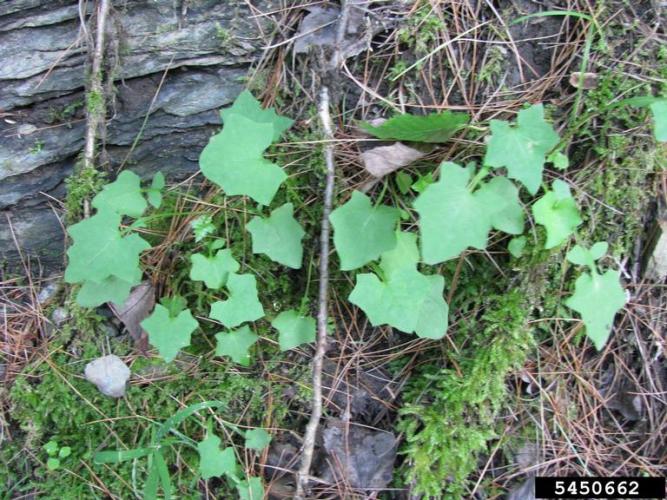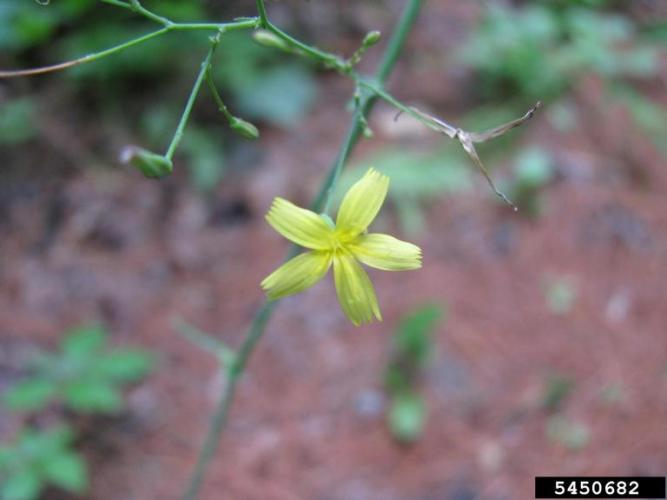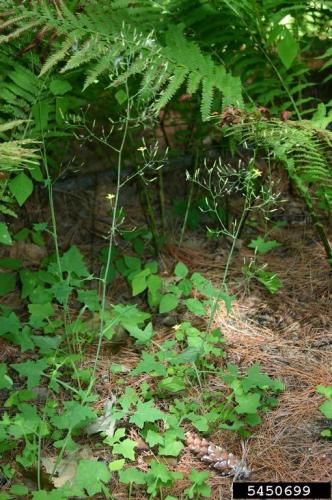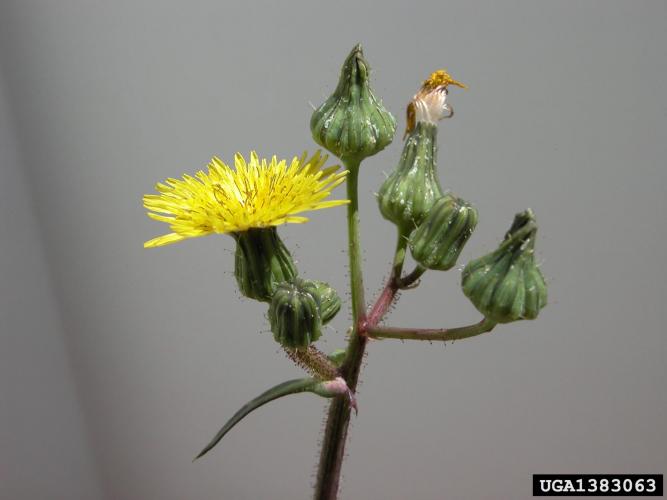Wall-lettuce
Identification
Appearance
Mycelis muralis is a slender, glabrous, herbaceous plant. It is annual to biennial depending on the habitat. Stems are erect, 2-3 feet tall, branched above and may one or more stems from a fibrous root. The stem surface is glabrous, often glaucous, and exudes milky juice when broken.
Foliage
Basal and lower stem leaves are 2.5-7 inches long, 1-3 inches wide, glabrous and deeply lobed, with broad, terminal segments. Leaf base is auriculate (lobed). The few middle and upper stem leaves are reduced in size.
Flowers
Each flower head is comprised of 5 yellow, strap-shaped ray florets.
Fruit
Achenes are approximately 0.13 inches long, several-nerved, and black or brown with white pappus that may disperse seeds long distances by wind.
Biology
This is considered a watch list species
Origin
Native to Eurasia
Habitat
Grows in disturbed habitats, meadows, and fields.
Ecological Threat
Mycelis muralis reproduces exclusively by seed. A plant may produce up to 500 seeds in shaded sites and up to 11,500 seeds in open sites. Wall lettuce can grow in deep shade and full sun. It is adapted to a range of soil conditions. It readily invades disturbed habitats.




